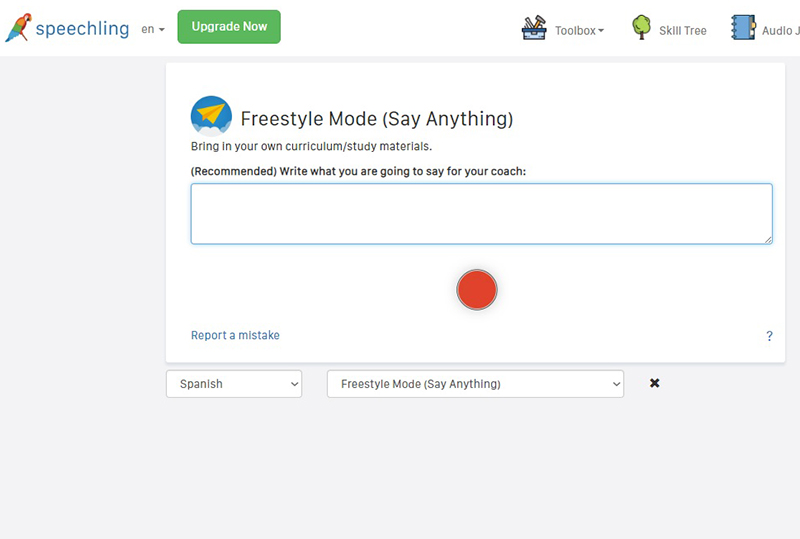7 Reasons to Watch and Read Spanish News for Language Learners

One of the best ways to learn the Spanish language is by keeping up to date with Spanish news. Especially if you already watch the news on a regular basis, watching it in Spanish instead will allow you to learn a new language while saving you time. Whether you consume your news on the TV or online, the news will allow you to learn a perfect mix of professional and colloquial Spanish, get in touch with Spanish-speaking culture, and have fun in the process.
In this article, we take a deep dive into the many reasons to consider Spanish news as part of your language learning routine, as well as offer specific options for which avenues to consume your news.

Top 7 Reasons to Watch and Read Spanish News
1. Spanish News Teaches You About Spanish-Speaking Cultures
Many language learning materials and textbooks try to introduce cultural topics like food, literature, and politics, but usually only give a superficial overview. Reading the news in Spanish is the best way to learn about a certain country, while also studying the local language. Are you interested in Spanish soccer? In-depth articles about historic matches will be much more insightful than a few paragraphs in a textbook.
Furthermore, if you have trouble finding something to say during a tutoring session or conversation practice with a friend, you can always turn to recent events. Because you have been reading up on the news, you should have all the vocabulary ready and learned.

2. Newspapers Use Colloquial Dialogue More Than Books
Many Spanish language learners run into a problem when actually involved in conversation with native speakers. They might hear Spanish-speaking people say, "you speak so formally" or "you sound like a grandpa". That's because they have not been exposed to enough real conversations. News presentations frequently feature dialogues and/or interviews. During these, you can dissect the colloquial vocabulary and sentence structure at your own pace to really understand and absorb it.
That's not to say all of the news is presented colloquailly though. The news offers a perfect mix of professional and colloquial Spanish, as the style is generally free of vulgar slang and profanity while still using grammatically perfect Spanish. Overall, this is a useful style to imitate because it is appropriate for a wide audience.

3. The News Covers All Subjects
Take a minute to analyze your intake of Spanish reading materials. Unless you are already approaching fluency, you probably haven't read a Spanish book on every subject, due to the slower speed at which we Spanish learners read. The perfect mix of subject matter can be found in a newspaper or news magazine.
Instead of skipping ahead to one subject you personally enjoy, expand your vocabulary and knowledge by reading the entirety of the publication. Both real life and standardized Spanish tests demand an understanding of vocabulary relating to health/medicine, science, politics, art, and more.

4. Spanish News Dictates What People Talk About
People discuss what is in the news. If you've got this inside information, you can participate in conversation more easily. The vocabulary in Spanish news will prepare you for surprising, yet useful words that appear in daily conversations about specific topics.
El País, from Spain, is a great resource to find out about hot topics in all Spanish-speaking countries. It has an international section that covers Mexico and Central/South America.

5. Reading the News in Spanish Can Be Habit-Forming
It can be hard to get in the groove sometimes, and keep up with your language learning. Read the news in Spanish with a cup of coffee in the morning in order to make it part of your morning ritual. It's much easier to make a habit out of reading the news in Spanish than it is to make a habit of filling our grammar exercises. If you're a beginner, try to just decipher the headlines, once at an intermediate level, read at least one article, and when you're advanced, plow through the whole thing!
If you already have a habit of consuming your news in your native language, then simply switching over to a Spanish site can be helpful. One of my favorite news podcasts is Radio Ambulante, which offers the same story with transcriptions in English and Spanish, which allows for a side-by-side comparison suitable for language learning.

6. Watch Spanish News to Practice Full-Speed Spanish Comprehension
One challenging aspect of Spanish that language learners must become accustomed to is the speed at which the language is spoken. Of the more commonly spoken languages in the world, Spanish comes in a very close second to Japanese in terms of syllables spoken per second. Watching the news in general is a great way to feel the real pace of Spanish. If you are looking for a challenge, try to understand the rapid fire dialogue of Antonio García Ferreras on the program Al Rojo Vivo on the channel "La Sexta". This news channel in general has great streaming online programming.
For beginners, something like News in Slow Spanish is more appropriate. It offers natural but slow versions of stories about current events.

7. News Videos are Multitask Friendly
There are many Spanish news channels on Youtube, such as Telemundo from Mexico. It is so easy to throw on a video while you eat lunch, workout, cook, or clean the house. Multitasking is made even easier by setting up your own playlist of shorter clips, selecting from many interesting stories.
If you are commuting to work, you can consider playing a news podcast to pass the time while stuck in traffic. Oftentimes, podcasts will contain transcriptions that you can review afterwards to learn about new grammatical structures or vocabulary.

Set Up a Routine With Variety
Although watching the news is a fantastic way to learn Spanish, it should not be used as the only resource. Newspapers or video news clips themselves won't get you to fluency. The same goes for movies. You can't be a Spanish expert by just watching Netflix over and over again. The key is developing a routine with a lot of variety.
To practice your Spanish speaking, which is one of the most important, yet under-practiced skills, try inserting a few excerpts from a Spanish news source that you find challenging or interesting into Speechling's "Freestyle Mode". Combining the resources and tips from this article will make for a dynamic learning experience, and you can do it all by yourself!
